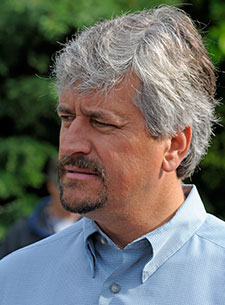NY Investigation of Asmussen Case Completed

The New York State Gaming Commission has completed its investigation into allegations by the People for the Ethical Treatment of Animals regarding the care of horses trained by Steve Asmussen and the final report is being completed, according to Dr. Scott Palmer, the commission's equine medical director.
During the commission's Jan. 26 meeting, Palmer said the report was being completed but did not say when it would be released nor did he indicate what the report would say. Palmer said commission staff reviewed hundreds of pages of notes and nearly eight hours of video from PETA in compiling the report.
When the Kentucky Horse Racing Commission earlier this month cleared Asmussen and his assistant Scott Blasi of all charges brought by PETA, the Kentucky regulatory body said the online video it was provided by PETA lasted only 22 minutes and 17 seconds. In expressing frustration with how PETA handled itself, the KHRC determined that the video had been highly edited. PETA had suggested the video showed equine abuse at the Asmussen stable in 2013 at Churchill Downs.
The NYSGC members did not discuss the upcoming report nor ask Palmer any questions about it.
In official action during the short meeting, the NYSGC gave unanimous approval to changing the state's out-of-competition rule to include prohibition of "all substances that are capable of abnormally enhancing the oxygenation of body tissues."
The rule is aimed at prohibiting excessive levels of cobalt, a naturally occurring element found in low levels in horse feeds and vitamin supplements. "Concentrated cobalt salts, when administered in supra-dietary doses, can cause cobalt toxicity, an increase in red blood cells, and an enhancement of aerobic performance, similar to the prohibited administration of erythropoietin (EPO)," a NYSGC brief report said.
The rash of equine deaths at the current Aqueduct Racetrack meet were also addressed, with NYSGC executive director Robert Williams saying the commission is "gravely concerned" about the situation and outlined steps being taken to lower the death rate.
In addition to steps previously announced by the New York Racing Association and NYSGC to help rectify the problem, Williams said the commission is utilizing statistical data obtained from necropsy reports to help determine risk factors in horses.
Also, the equine medical director has stepped up the frequency of Equine Safety Review Board meetings to weekly from monthly and the commission is expediting its pathology report process.
